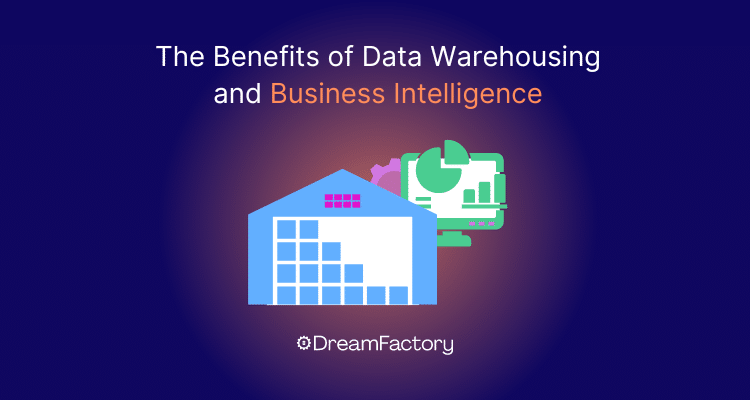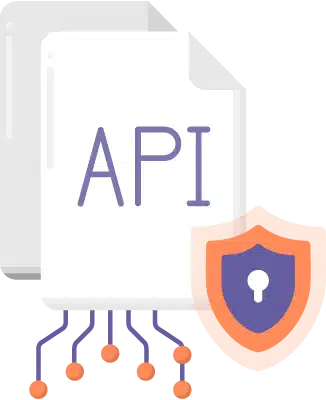The Benefits of Data Warehousing and Business Intelligence
by Spencer Nguyen • March 12, 2024

Making sense of the ever-growing mountains of data is a challenge that organizations of all sizes face today. This article explores the powerful synergy between data warehousing and business intelligence, demonstrating how they work hand-in-hand to transform raw data into actionable insights. We'll also delve into the role of APIs in facilitating real-time data integration and automation.
Here are the key things to know about data warehousing and business intelligence:
- Data warehousing involves collecting and storing large volumes of data from multiple sources into a centralized repository for analytical purposes.
- Business intelligence (BI) refers to the tools and processes used to analyze and present data to support informed decision-making.
- Data warehousing and BI work together, with data warehouses serving as the foundation for storing and managing data, while BI tools analyze and visualize that data to uncover insights.
- Application Programming Interfaces (APIs) play a crucial role in facilitating data integration from various sources into data warehouses and enabling real-time data access and automation.
- DreamFactory is a platform that simplifies API generation, allowing organizations to quickly create secure APIs from diverse data sources and streamline data integration for data warehousing and BI.
Table of Contents

Generate a full-featured, documented, and secure REST API in minutes.
Generate a full-featured, documented, and secure REST API in minutes.
What is Data Warehousing?
Data warehousing is a process of collecting, integrating, and storing large volumes of data from multiple sources into a centralized repository, known as a data warehouse. A data warehouse is designed to support analytical and reporting activities, enabling organizations to make data-driven decisions.
Unlike operational databases, which are optimized for transactional processing, data warehouses are specifically designed for analytical purposes. They consolidate and organize data from various sources, such as databases, applications, and external data feeds, into a structured format optimized for querying and analysis.
The data in a data warehouse is typically organized into subject-oriented, integrated, time-variant, and non-volatile collections, known as data marts. These data marts are designed to serve specific business functions or departments, providing a focused view of the data relevant to their needs.
Data warehousing involves several key processes:
- Data Extraction: Data is extracted from various sources, such as operational databases, flat files, or external data sources.
- Data Transformation: The extracted data undergoes a series of transformations, including cleansing, formatting, and integrating, to ensure data integrity and consistency.
- Data Loading: The transformed data is loaded into the data warehouse, following a predefined schema and data model.
- Data Refreshing: The data warehouse is periodically refreshed with new data to ensure it remains up-to-date and accurate.
By consolidating data from disparate sources into a centralized repository, data warehousing enables organizations to perform complex queries, generate reports, and analyze data from multiple perspectives. This empowers organizations to uncover valuable insights, identify trends and patterns, and make informed, data-driven decisions across various business functions, such as marketing, sales, finance, and operations.
Data warehousing is a critical component of business intelligence (BI) systems, providing the foundation for advanced analytics, data mining, and reporting capabilities. By leveraging data warehousing, organizations can gain a comprehensive understanding of their operations, customers, and market dynamics, enabling them to make strategic decisions that drive growth and competitive advantage.
What is Business Intelligence?
Business Intelligence (BI) refers to the strategies, technologies, and processes involved in collecting, analyzing, and presenting data to support informed decision-making within an organization. BI enables businesses to gain valuable insights from their data, identify patterns and trends, and make data-driven decisions that drive growth and enhance operational efficiency.
Business Intelligence encompasses a wide range of tools and techniques, including data visualization, reporting, analytics, and data mining. These tools and techniques are designed to transform raw data into meaningful and actionable information that can be used to address various business challenges and opportunities.
Some key components of Business Intelligence include:
- Data Sources: BI systems gather data from various sources, such as transactional databases, data warehouses, spreadsheets, and external data feeds.
- Data Integration: Data from different sources is integrated and consolidated into a unified view, enabling organizations to analyze data from multiple perspectives.
- Data Analysis: BI tools and techniques are used to analyze and interpret data, uncovering insights, trends, and patterns that would be difficult to identify through manual analysis.
- Data Visualization: BI platforms provide powerful data visualization capabilities, allowing users to present data in a visually appealing and easily understandable format, such as dashboards, charts, and reports.
- Predictive Analytics: Advanced BI solutions leverage machine learning and statistical models to perform predictive analytics, enabling organizations to forecast future trends and make data-driven predictions.
By leveraging Business Intelligence, organizations can gain a competitive edge by making informed decisions based on reliable and up-to-date data. BI empowers businesses to optimize processes, reduce costs, identify new revenue streams, and enhance customer experience, ultimately driving growth and profitability.
Effective Business Intelligence requires a combination of technological tools, data governance strategies, and a data-driven culture within the organization. As data continues to play an increasingly significant role in business operations, the adoption of BI has become essential for organizations to stay competitive and make informed, strategic decisions.
How Data Warehousing and Business Intelligence Come Together
Data warehousing and business intelligence (BI) are intrinsically linked, working together to help organizations leverage their data effectively. Data warehouses serve as the foundation, consolidating data from multiple sources into a centralized, structured repository optimized for analysis. BI tools then tap into this wealth of data, extracting, analyzing, and visualizing it to uncover valuable insights, trends, and patterns that inform business decisions.
The foundation of this powerful pair is the data warehouse – a centralized repository that meticulously consolidates and organizes data from multiple sources into a structured format optimized for analysis. It's like having a super-efficient digital librarian carefully curating and cataloging information from various departments and systems.
The relationship between the two is symbiotic. Data warehousing ensures high data quality and consistency by integrating and cleansing large volumes of data from disparate sources. This provides a single source of truth for the organization's data. BI tools then utilize this trusted data, offering advanced analytics, reporting, and visualization capabilities that allow users to explore the data and generate actionable insights.
This dynamic duo facilitates data-driven decision-making on an organizational level. The data warehouse provides the reliable, up-to-date information, while BI tools enable the analysis and visualization of that data in a meaningful, actionable manner. It's a potent combination that empowers organizations to monitor key performance indicators (KPIs), track progress towards goals, and identify areas for improvement or optimization, like having a real-time dashboard and early warning system for your business.
APIs: Facilitating Data Warehousing and BI
At their core, APIs are the translators of the digital age, allowing different systems and applications to communicate and exchange data seamlessly. They're like fluent polyglots, effortlessly facilitating the integration of data from various sources into a centralized data warehouse. This ensures that your organization's data warehouse remains a comprehensive and up-to-date repository, reflecting the latest information from across your digital ecosystem.
But APIs aren't just data couriers; they're also enablers of real-time data access. With APIs, you can capture and process data as it's generated, empowering your organization to make informed decisions based on the most current information. Imagine being able to monitor real-time business operations, analyze customer behavior, or detect security threats as they happen – all made possible by the power of APIs.
And just like the best superheroes, APIs are incredibly versatile and adaptable. They're designed to scale and evolve alongside your organization's growing data needs, ensuring that your data warehouse remains a robust foundation for business intelligence and analytics. APIs also enable data enrichment, allowing you to integrate external data sources, such as weather data, demographic information, or social media sentiment, adding valuable context and depth to your analyses.
But perhaps the most impressive feat of APIs is their ability to automate data pipelines. Imagine a world where data flows seamlessly, extracted, transformed, and loaded into your data warehouse without a hitch. APIs make this a reality, reducing manual effort and minimizing errors, ensuring that your BI reports and dashboards are always based on the most up-to-date and accurate information.

Generate a full-featured, documented, and secure REST API in minutes.
Generate a full-featured, documented, and secure REST API in minutes.
DreamFactory: Simplifying API Generation for Data Warehousing and BI
DreamFactory streamlines API generation for data warehousing and business intelligence. This powerful platform enables organizations to quickly create secure APIs from diverse data sources through an automated approach. By leveraging DreamFactory, businesses can accelerate data integration, enable real-time access, automate pipelines, and enrich data - all while maintaining agility and scalability. DreamFactory simplifies API management, empowering data-driven decision-making and a competitive edge.
Want to give it a try? Start your free trial now!
TL;DR - GET AN AI SUMMARY
AI SUMMARY
READY TO BUILD YOUR API?
See how DreamFactory can automatically generate REST APIs for your database in minutes.
Try DreamFactory FreeAs a seasoned content moderator with a keen eye for detail and a passion for upholding the highest standards of quality and integrity in all of their work, Spencer Nguyen brings a professional yet empathetic approach to every task.
























